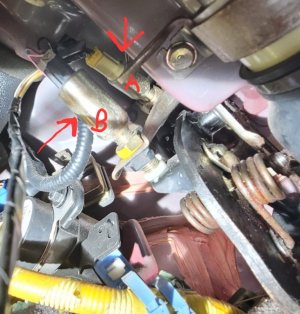Hello Guys
1993 NSX, Manual Trans, 114k
Click, No Crank, No Fuel Pump Prime
I have replaced the following using OEM parts from Japan.
I put the key in the ignition, turn it to the "on" position....
(1). Check Engine Light illuminates briefly as it should with the key in the “ON” position and then turns off.
(2). I can hear the Main Relay 'click' as it should.
(3). I cannot hear the fuel pump prime.
(4). Starter does not crank.
* I attached a 'cable with a manual push button' to the starter and the starter cranks and turns the engine over, but still will not start, even with the key in the 'on' position. During the first month this worked to start the car, but no longer does at all.
* I have openned the ignition switch to check it and to clean it. Everything inside looked fine. I am ordering a new ignition switch on Monday.
* Healthy Yellow Top Optima Battery
I read every thread on this topic, several times. I have been trying to get my NSX to start for over 6 months following everything I read as a guide. I also replaced all the relays above (one at a time, then tried to start before installing the next relay). I was sure one of the four relays would solve my issue, however, still no success. I am finally making this post. Please help. Thanks
1993 NSX, Manual Trans, 114k
Click, No Crank, No Fuel Pump Prime
I have replaced the following using OEM parts from Japan.
- Main Relay
- Power Relay
- TCS Safe Relay
- Fuel Resistor Relay
I put the key in the ignition, turn it to the "on" position....
(1). Check Engine Light illuminates briefly as it should with the key in the “ON” position and then turns off.
(2). I can hear the Main Relay 'click' as it should.
(3). I cannot hear the fuel pump prime.
(4). Starter does not crank.
* I attached a 'cable with a manual push button' to the starter and the starter cranks and turns the engine over, but still will not start, even with the key in the 'on' position. During the first month this worked to start the car, but no longer does at all.
* I have openned the ignition switch to check it and to clean it. Everything inside looked fine. I am ordering a new ignition switch on Monday.
* Healthy Yellow Top Optima Battery
I read every thread on this topic, several times. I have been trying to get my NSX to start for over 6 months following everything I read as a guide. I also replaced all the relays above (one at a time, then tried to start before installing the next relay). I was sure one of the four relays would solve my issue, however, still no success. I am finally making this post. Please help. Thanks
Last edited:













